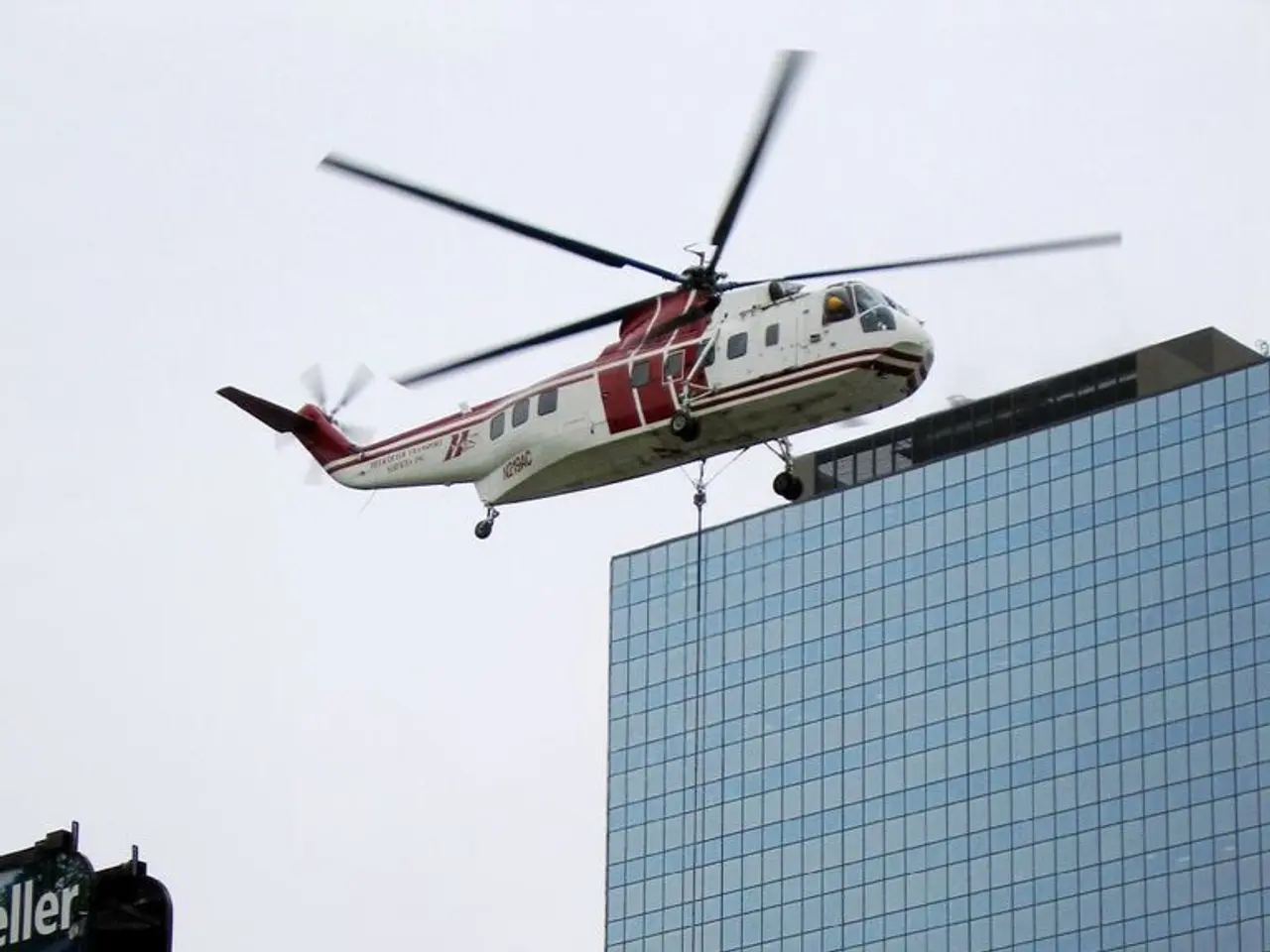Airbus Helicopters enhances market edge through the use of 3D printing technology.
Airbus Helicopters Embraces 3D Printing for Sustainable Aviation
Airbus Helicopters, a leading name in the aviation industry, has been leveraging 3D printing (additive manufacturing) to bring about significant changes in its production processes. Since 2017, the company has mass-produced over 9,400 locking shafts for the doors of the Airbus A350 using this innovative technology.
The new 3D printing center at Airbus Helicopters' Donauwörth site significantly expands the company's in-house capacity for this cutting-edge technology. The center now operates a total of seven 3D printing machines, three of which produce components made of titanium, four produce plastic parts, and one produces components made of aluminium.
The 3D printing process involves the use of laser beams to melt metal or plastic powders, creating the desired shapes layer by layer. This method requires only 1.5 times as much raw material as the final product, compared to up to ten times more in conventional manufacturing. This material efficiency directly contributes to reduced costs and environmental impact.
One of the key benefits of 3D printing is the ability to produce complex structures more easily than with conventional methods. This is particularly evident in the locking shafts for the Airbus A350 doors, which are made of titanium. The reduced weight of these shafts can bring financial benefits and contribute to reducing CO2 emissions during operations. In fact, eleven tonnes of titanium powder have been used in Donauwörth for printing these locking shafts alone.
Stefan Thomé, Managing Director of Airbus Helicopters in Germany, stated that the extensive capabilities in 3D printing along the manufacturing chain are a real competitive advantage. This advantage is further evident in the production of components for the electrically powered CityAirbus NextGen and the experimental high-speed helicopter, Racer. The 3D printing process can be used for serial production as well as for components for prototypes.
The use of 3D printing for the locking shafts contributes to the serial production capabilities of Airbus Helicopters. This technology offers benefits such as reduced weight of aircraft components, less fuel consumption, increased resource efficiency, high flexibility, and the ability to produce complex structures more easily than with conventional methods.
In addition to the Airbus A350, the benefits of 3D printing are also being realised in the production of complex engine components, such as turbine vanes and combustor liners made from ceramic matrix composites that tolerate ultra-high temperatures. These contribute to engines operating at higher temperatures and efficiencies, translating into better fuel economy.
The reduced part count and faster production associated with 3D printing also offer numerous advantages. Additive manufacturing often consolidates multiple traditional parts into a single printed component, reducing assembly time, potential failure points, and maintenance complexity. Faster prototyping and production cycles enable quicker iteration and deployment of lightweight designs, improving overall aircraft performance and reducing time-to-market.
Finally, the ability to print parts on demand mitigates supply chain disruptions and enables localized production for maintenance and repair, minimizing aircraft downtime and reducing lifecycle environmental impact associated with transporting spare parts.
In conclusion, Airbus Helicopters’ 3D printing applications optimize aerospace component weight and complexity, enhance thermal and structural performance, and accelerate manufacturing timelines, all contributing to reduced fuel consumption and a smaller carbon footprint for aircraft operations. These outcomes align with broader aerospace industry trends integrating composite and advanced material additive manufacturing for sustainable aviation.
- Airbus Helicopters' production of titanium components using 3D printing extends beyond the Airbus A350 to include the CityAirbus NextGen and the experimental high-speed helicopter, Racer, demonstrating the technology's potential in the aerospace industry.
- The finance sector may witness cost reductions and efficiency improvements due to the serial production capabilities and fast prototyping cycles enabled by 3D printing in the aerospace industry, contributing to better fuel economy and sustainable aviation.








